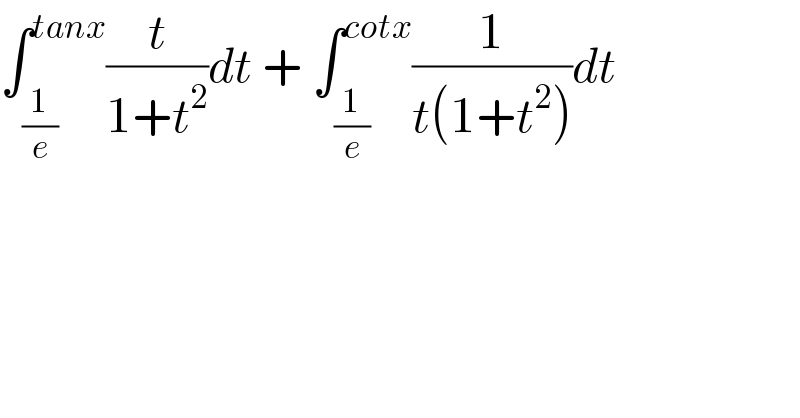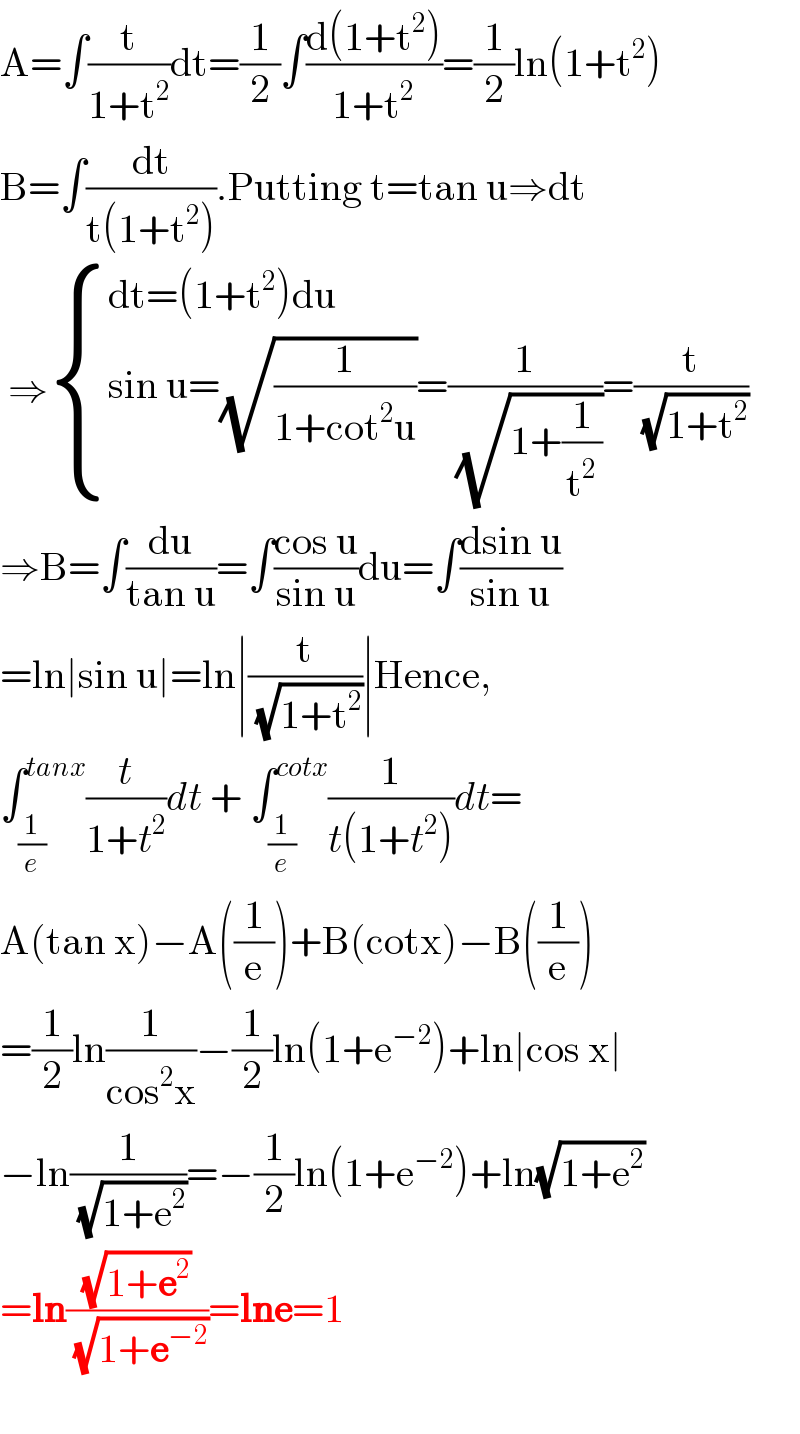
Question and Answers Forum
Question Number 101378 by Rohit@Thakur last updated on 02/Jul/20

Commented by Dwaipayan Shikari last updated on 02/Jul/20
![(1/2)∫_(1/e) ^(tanx) ((2tdt)/(1+t^2 ))=[(1/2)log(1+t^2 )]_(1/e) ^(tanx) =(1/2)log(sec^2 x)−(1/2)log(((1+e^2 )/e^2 )) −(1/2)∫_(1/e) ^(cotx) (((−2dt)/t^3 )/(1+(1/t^2 )))=[−(1/2)log(1+(1/t^2 ))]_(1/e) ^(cotx) =−(1/2)log(((cosec^2 x)/(cot^2 x)))+(1/2)log(1+e^2 ) =−(1/2)log(sec^2 x)+(1/2)log(1+e^2 ) So ∫_(1/e) ^(tanx) (t/(1+t^2 ))+∫_(1/e) ^(cotx) (1/(t(1+t^2 )))=(1/2)log(1+e^2 )−(1/2)log(((1+e^2 )/e^2 )) =(1/2)loge^2 =1 ★■L](Q101389.png)
Answered by 1549442205 last updated on 02/Jul/20

Answered by mathmax by abdo last updated on 02/Jul/20
![we have ∫_(1/e) ^(tanx ) (t/(1+t^2 ))dt =[(1/2)ln(1+t^2 )]_(1/e) ^(tanx) =(1/2)ln(1+tan^2 x)−(1/2)ln(1+e^(−2) ) =(1/2)ln((1/(cos^2 x)))−(1/2)ln(1+e^(−2) ) =−ln∣cosx∣ −(1/2)ln(1+e^(−2) ) ∫_(1/e) ^(cotanx ) (dt/(t(1+t^2 ))) =∫_(1/e) ^(1/(tanx)) ((1/t)−(t/(1+t^2 )))dt =[ln∣t∣]_(1/e) ^(1/(tanx)) −[(1/2)ln(1+t^2 )]_(1/e) ^(1/(tanx)) =−ln∣tanx∣+1 −(1/2)ln(1+(1/(tan^2 x)))−(1/2)ln(1+e^(−2) ) =−ln∣tanx∣−(1/2)ln(1+tan^2 x)+ln∣tanx∣ −(1/2)ln(1+e^(−2) )+1 ⇒ ∫_(1/e) ^(tanx ) ((tdt)/(1+t^2 )) +∫_(1/e) ^(cotanx) (dt/(t(1+t^2 ))) = (1/2)ln(1+tan^2 x)−(1/2)ln(1+e^(−2) ) −(1/2)ln(1+tan^2 x)−(1/2)ln(1+e^(−2) ) +1 =1](Q101470.png)
